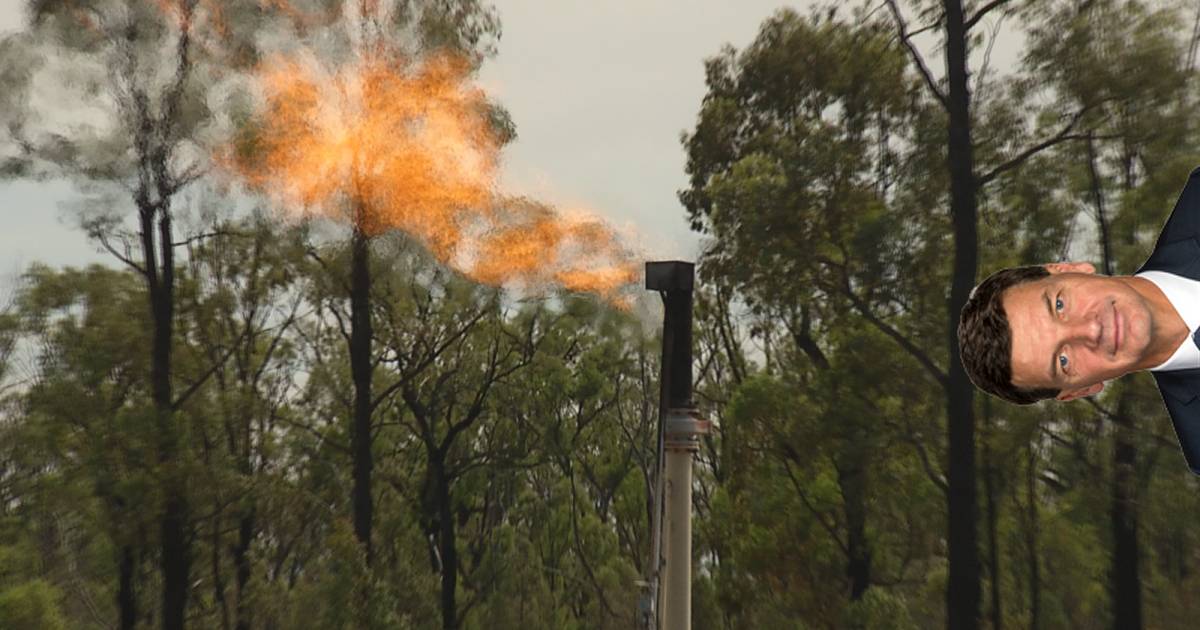
While COP26 is still clearly visible in its rear view mirror, the Morrison Government has already “set fire” to the agreement it made at the conference says the Climate Council.
On Friday, the Morrison Government released the first full National Gas Infrastructure Plan (NGIP) and the Future Gas Infrastructure Investment Framework, which it says will help secure Australia’s gas supplies over the next 20 years.
“The Morrison Government is serious about gas and acknowledges the important role it plays supporting jobs, food-production, manufacturing, industry, exports and energy supply,” said Minister for Industry, Energy and Emissions Reduction, Angus Taylor.
What it doesn’t appear to be so serious about is the last bit in Minister Taylor’s title – and that is very serious.
Net Zero By 2050 Commitment “Designed To Mislead”
Climate Council Head of Research Dr. Simon Bradshaw said doubling down on gas will further negatively impact Australia’s international reputation on emissions and increasingly expose communities to the impacts of climate change.
“What part of gas is a polluting fossil fuel does this government not understand? This plan is a disaster. The science is very clear: to avoid a climate catastrophe, fossil fuels must stay in the ground.”
Climate Councillor Greg Bourne said if the world is to limit temperature increases to below the critical threshold of 1.5 degrees, there can be no new coal, oil or gas fields.
“It is abundantly clear that the Morrison government’s net zero by 2050 commitment was designed to mislead and always included expansion of gas.”
The Climate Council wasn’t alone in its scathing assessment of the announcement – among the commentary:
Greenpeace: “Reckless And Dishonest”
Greenpeace Australia Pacific CEO David Ritter stated:
“This is a reckless and dishonest plan to lock Australia into a disastrous future. It is a plan to benefit gas corporations at the expense of the health and safety of Australian people, our land and water supplies and the climate.”
Mr. Ritter said claims of a looming shortfall of gas were lies, and given the shift to renewable energy globally the Morrison Government has demonstrated it’s not only a climate wrecker, but also economically illiterate.
Lock The Gate: “Corporate Welfare”
The Plan notes “opportunities” remain for state and territory governments to help unlock further supplies of gas given moratoria and other regulatory restrictions on unconventional gas development (e.g., fracking coal seam gas) in some jurisdictions.
“As well as draining groundwater, degrading landscapes, and contributing to climate change, the unconventional gas industry is also a notoriously low employer,” said Lock the Gate Alliance National Coordinator Carmel Flint. “Gas doesn’t create new jobs – it just takes them from existing industries that are pushed out.”
Hydrogen Hype Motivation
The Morrison Government jumped on the hydrogen bandwagon a while back – and its motivations are made increasingly clear in the Plan (page 4 – bolding mine).
“In the future, abundant fuel sources for hydrogen production, including renewables, coal and natural gas, along with promising locations for CCS technology, make Australia well placed to benefit from the global hydrogen economy.”
Let’s say hydrogen really takes off – why would the world want Australia’s filthy hydrogen when it can be produced more cleanly with renewables energy? As for the siren song of Carbon Capture and Storage (CCS) technology, well…

 RSS - Posts
RSS - Posts



Er what’s a coil field? 😛
As for a looming shortfall of gas, which shortfall is Ritter talking about? Europe is dangerously short at present, prices have soared sky high, and consequently hundred of millions face the hard choice between energy bills they can’t afford, or cold homes, and this doesn’t take into account those who will die this winter (northern hemisphere) due to the cold.
The ‘wind shortage’ is only exacerbating the issue with gas prices in the UK quadrupling, and numerous small energy companies going bust as a result.
Add in new homes being built to affordable standards rather than basic energy efficiency standards, and the demand for expensive (or unavailable) energy soars higher still.
So which gas shortage is a myth again?
Thanks for pointing out the typo. It has been fixed. They’ll be no more coil extracted from Australian coil fields.
Europes’ shortfall of fossil gas is primarily due to Russia & Belarus playing games ?? with pipeline frolics.
“Climate Councillor Greg Bourne said if the world is to limit temperature increases to below the critical threshold of 1.5 degrees, there can be no new coal, oil or gas fields.”
No, he didn’t. Greg Bourne was referring to what the IEA has said – per the link provided above in the post:
But the IEA is misinformed if it thinks it is still possible to limit global mean warming to below the +1.5 °C threshold. The scientific evidence I see indicates otherwise.
Per the NOAA webpage titled Climate Change: Atmospheric Carbon Dioxide, updated Oct 7 (bold text my emphasis):
https://www.climate.gov/news-features/understanding-climate/climate-change-atmospheric-carbon-dioxide
And when is the Earth System likely to breach the +1.5 °C global mean warming threshold? BEFORE 2030, regardless of what we/humanity do (or not do) in the interim – see Table 1 at: https://doi.org/10.5194/esd-12-253-2021
In James Hansen and Makiko Sato’s Aug 13 July Temperature Update: Faustian Payment Comes Due, there’s Figure 2 showing a graph of global surface temperature relative to the 1880–1920 average, from years 1880 through to 2020. The blue wiggle represents the 12-month average, the red wiggle represents the 132-month average, and the green line is the best linear fit for the period 1970–2015 (with a gradient of +0.18 °C per decade). Note that the graph shows from about 2015 the gradient has become apparently significantly steeper, approaching +0.3 °C per decade. The January to December mean temperature for three out of the last five years (2016, 2019 & 2020) have been above +1.2 °C global mean warming.
http://www.columbia.edu/~mhs119/Temperature/Emails/July2021.pdf